What is the equipment for sewage
Sewerage equipment includes all specialized construction materials, due to which dirty water is drained from the house, such as from the toilet, bath, sink, sink and other sanitary facilities and its cleaning. Today, most of the elements of the equipment are made of plastic, as it does not collapse under the influence of moisture and air, but, nevertheless, it does not do without metal.
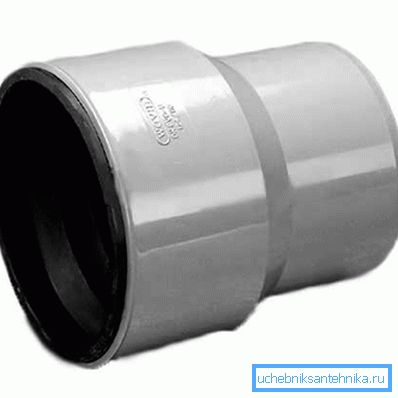
We will try to explain the purpose of various fittings and devices, as well as show you the video in this article.
Sewage
Component line
Note. The word sewage in the ordinary man in the street is associated with a pipe through which sewage flows into the cesspool. But in fact, everything is much more complicated, even if you do not take into account the treatment plant.
In order to bring the pipeline to the place of flow, you need a lot of different fittings, reductions and seals.
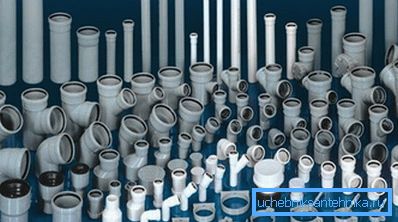
- In order to make any connection in the pipeline - frame, turn, decoupling, transfer to another diameter, transfer to another plane or another level, you will need various adapters, called fittings. But here we are talking only about transitional fittings that do not have other functionality, but they do an excellent job with all the functions listed above. Corner bends for turns and junctions can have an angle of 32?, 45? and 90 ?.
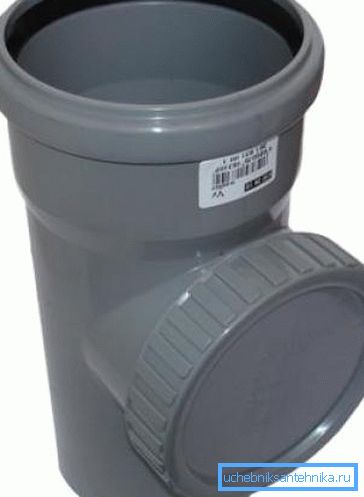
- When cornering, as well as in areas where the length of the pipeline exceeds 4-5 meters, specialized tees for preventive maintenance of the main line are called, which are called sewer inspection. This element looks like a normal tee, only its side branch has a lid that closes it during operation, and in case of blockage, the lid is unscrewed and the clog is removed with a sanitary cable through this channel. In those places where the audit crashes, equip niches (indoors) or manholes (on the street).
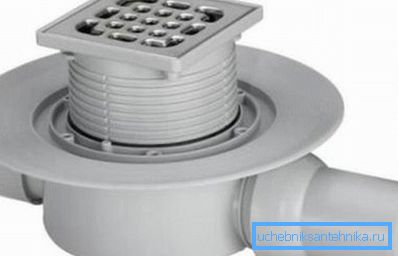
- For the drain sewer in the room, for example, in the bathroom, a drain is inserted into the system to drain water from the floor, which can be either vertical or horizontal, as in the photo above - it all depends on the depth of the gasket. But on the street for these purposes a sewer grate is used, only there it is not the pipe that is most often used for the drain, but the chute.
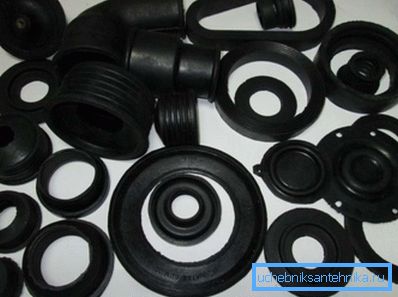
- To change to a different diameter, not only a rigid fitting can be used, but also a sewer cuff, also called reduction.. Such a device is mainly used for pipes from siphons, when they need to be connected to the trunk, for example, dock the 40-mm end of the pipe with a 50-mm retraction fitting. In addition, fittings with a 32 mm outlet are very rare, therefore, for washing machines and dishwashers, rubber cuffs are also used to change from 32 mm to 50 mm.
- Also, all joints on plastic pipes are not sealed with any silicones, sealants and tape-wrapped - rubber sealing rings are used for this purpose, the price of which is not considered when budgeting, since these are accessories for pipes. Such seals perfectly withstand the low pressure of the waste fluid, and if after the construction of the assembly you notice a leak, then do not rush to seal it with a sealant - this means that the ring is skewed and needs to be fixed.
Recommendation. When assembling the line, sometimes it can be difficult because the rubber seals are too rigid and there is no instruction from the manufacturer about it. In order to facilitate the assembly, you need to end the pipe, which must be pushed through the seal, smeared with any liquid detergent, without which no modern housewife can do.
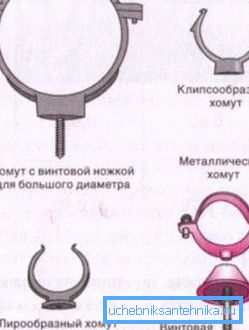
- For rigid fixation, plastic and metal clamps are used for sewer pipes, which are mounted like brackets, that is, the clamp is attached to the supporting plane (wall, floor, ceiling) and compresses the pipe rigidly. Up to 32 mm such consoles can be plastic, but, starting from 50 mm, they are made of metal.
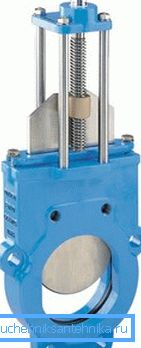
- Such a gate valve for sewage has an industrial purpose and is used in the mining or pulp and paper industries for bulk materials and viscous liquids.. In addition, in civil engineering, a crane is sometimes installed on a sewer pipe of a riser or lounger, which makes it possible to temporarily shut off a certain section so that the liquid flow does not interfere with the maintenance work.
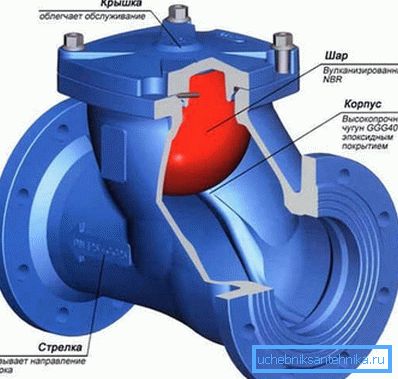
- For overflow protection, check valves are used, which may have a ball type of constipation and a flange connection, as in the upper photo.. Mounted such devices on large pipelines.
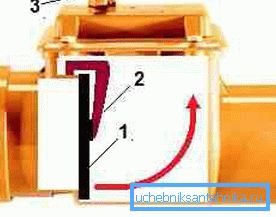
- For plastic sewer pipes, both indoors and outdoors, use horizontal and vertical diaphragm check valves made of plastic.. The locking element here is a membrane with a rubber seal (1), which is held and moved on the lever (2), and preventive access is provided through the access hatch (3).
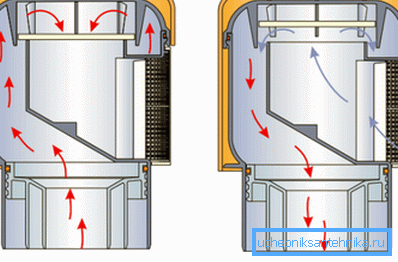
- When water is drained in the system, a vacuum of air is formed, which entails various extraneous noises.. To restore the pressure in the pipeline, an exhaust valve is mounted - with a difference in pressure inside and outside the valve opens slightly, allowing air from the room to fill up its deficit in the system.
Note. As a decorative measure, in both residential and industrial buildings, they often assemble a duct for a sewer pipe. But in those places where the pipeline has revisions or taps, the box must be equipped with doors or removable walls to ensure free access to the system.
Septic tank
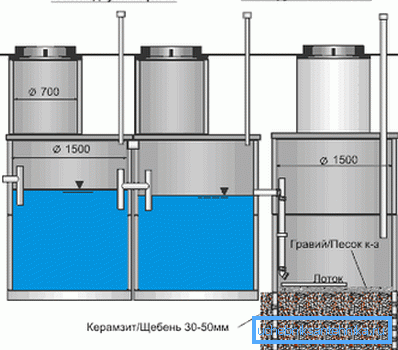
One of the important components of the sewage system equipment is a wastewater treatment plant, which in the home version looks like a septic tank for wastewater treatment. Such a device can be bought in the store - there the whole structure is made of plastic and can have a deep biofiltration - in fact, after this cleaning, the water is suitable for food consumption.
But also such devices in country plots are built with their own hands, using for this purpose metal barrels or concrete rings, but in this case, soil purification of sewage usually takes place.
Establish sewer circles for a septic tank, as a rule, at a certain distance from water sources (wells, reservoirs), architectural structures, trees and bushes. The liquid here undergoes three stages of purification - the heaviest elements settle in the first well, in the second - those that have slipped through the first and in the third are already undergoing soil purification.
Sand and crushed stone are poured into the third tank at the bottom as a filtration pad.
Conclusion
When installing the system, you will not have to use all the sewage equipment that you read about in this article - here you use the principle of quantum satis (as long as it takes). In addition, much depends on the distance and power of the entire system.